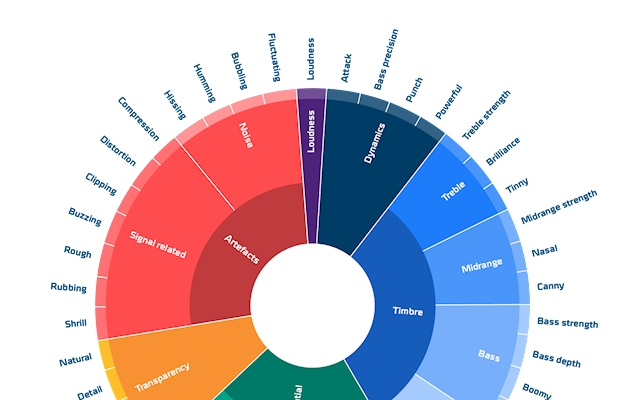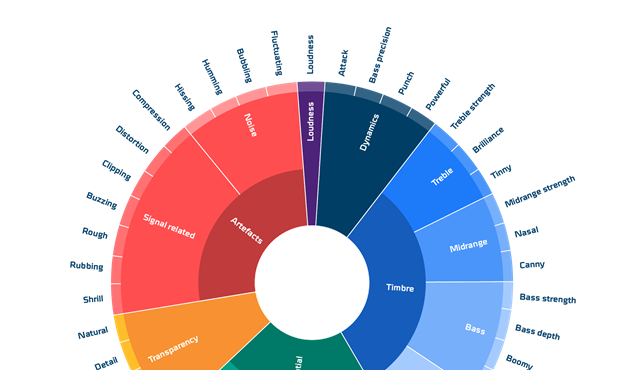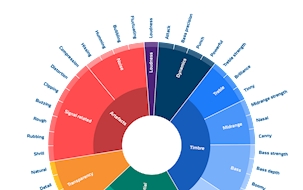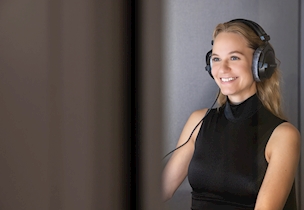Common language to describe sound
A vocabulary for sound characteristics enables audio professionals to communicate efficiently when talking about sound perception in the context of audio reproduction.
Speaking of audio
In order to communicate efficiently, one must have a concise and well-defined language so that everyone understands precisely what is meant. That also goes for sound. Until now, most audio professionals have used a colourful and often personal language to describe the perception of audio reproduction systems. In magazines, the language resembles poetry describing the tested products in both subjective and objective terms, while manufactures search for adjectives (often superlatives), which will impress consumers.
Even within the scientific community, a common language is lacking, for example in perceptual modelling and Machine Learning (ML), which is rapidly expanding in these years. One example is an article where “Punch” is modelled without a definition of the term [2]. In another article a very similar percept is described by “Apparent source width (ASW) in one place and “Sound image width” in another.
In short, a common language to describe auditory perception for communication amongst audio professionals makes a world of sense.
To meet this need ITU (The International Telecommunication Union) has recently released a report (ITU-R BS.2399-0 [1]), to help audio professionals talk about sound reproduction with a common language use with objective and unambiguous terms.

Article
Download the sound wheel
Audio vocabulary in the making
Back in 2005, Torben Holm Pedersen from FORCE Technology published a vocabulary of sound describing words [3]. Danish and English words with translations from one to the other was the first step in finding out how to assemble the audio vocabulary. His work has been widely recognised and was, for instance, the catalyst for a similar vocabulary for evaluations of sound in an automotive context [4].
Within perceptual audio evaluation, the set of characterising words are referred to as attributes. In 2006 Nick Zacharov (SenseLab) and Søren Bech (Bang & Olufsen) included a list of attribute requirements in their popular book Perceptual Audio Evaluation [5]. It is the continuation of their work, which led to a sound Wheel of well-defined attributes for evaluation of reproduced audio, which was described in a more recent paper from 2015 [6].
The paper includes a detailed description of how attributes in the Sound Wheel were established and validated. An updated version of this process which has now made it into ITU-R BS.2399-0, along with the sound wheel (now “Audio wheel”) as an example (see figure 1).

Impact and perspective of listening tests
The International Telecommunication Union (ITU) dates back to 1865, celebrating its 150th anniversary in 2015. With its current 193 member countries, it has a global reach and is an ideal platform for spreading the knowledge from the few to the masses.
With the publication of this report, the vocabulary used by audio professionals can now be gradually streamlined; not only by using a common set of words but just as importantly, by having a common understanding of the meaning of those words, as each one comes with a definition.
Sensory product information for audio products by use of the "Audio Wheel"
One very practical utilisation we at SenseLab hope this will bring is an increase of sensory product usage information on audio products, as known from the food industry, e.g. the beer label shown in figure 2. Also, an example of perceptual characteristics for a loudspeaker is shown in figure 2.
The published audio wheel is not static, and the development continues. Zacharov et al. have published an updated version with more spatial attributes [7]. Lindau et al. have published an alternative set of spatial attributes (SAQI) [8] and others will follow in the future. Thus, the ITU report may serve as a support document for ensuring that the continued development leads to high-quality contributions and further allows a wider segment of audio professionals to contribute. The Audio wheel is ready for a worldwide debate but is already an amazing tool for easing communication of the characteristics of reproduced speech and music.
ITU
The International Telecommunication Union (ITU) develops standards and recommendations for measuring and assessing equipment – both within telecommunication (ITU-T) and radiocommunication (ITU-R). It is within the broadcasting (BS) division of ITU-R that the report, ITU-R BS.2399-0 [1], was recently released. The report aims to help audio professionals talk about sound reproduction with a common language use with objective and unambiguous terms.
Contact us to learn more or visit our site about acoustics, noise and sound quality.
References
[1] ITU-R. ‘Methods for Selecting and Describing Attributes and Terms, in the Preparation of Subjective Tests’. Report. Geneva, Switzerland: International Telecommunication Union Radiocommunication Assembly (ITU-R), March 2017.
[2] Fenton, Steven, and Hyunkook Lee. ‘Towards a Perceptual Model of “Punch” in Musical Signals’. In Proc. of the Audio Engineering Society Convention 139, 1–10. New York, NY, USA: Audio Engineering Society, 2015.
[3] Pedersen, Torben H. ‘The Semantic Space of Sounds – Lexicon of Sound-Describing Words’. Lexicon. Hørsholm, Denmark: DELTA, May 2008.
[4] Altinsoy, M. Ercan; Jekosch, Ute. ‘The Semantic Space of Vehicle Sounds: Developing a Semantic Differential with Regard to Customer Perception’. J. Audio Eng. Soc 60, no. 1/2 (2012): 13–20.
[5] Bech, Søren, and Nick Zacharov. Perceptual Audio Evaluation: Theory, Method and Application. Chichester, England; Hoboken, NJ: John Wiley & Sons, 2006.
[6] Pedersen, Torben H., and Nick Zacharov. ‘The Development of a Sound Wheel for Reproduced Sound’. In Audio Engineering Society Convention 138, 1–13. Warsaw, Poland: Audio Engineering Society, 2015.
[7] Zacharov, Nick, Torben Pedersen, and Chris Pike. ‘A Common Lexicon for Spatial Sound Quality Assessment – Latest Developments’. In 2016 Eighth International Conference on Quality of Multimedia Experience (QoMEX), 1–6. Lisbon, Portugal: IEEE, 2016. doi:10.1109/QoMEX.2016.7498967.
[8] Lindau, Alexander, Vera Erbes, Steffen Lepa, Hans-Joachim Maempel, Fabian Brinkman, and Stefan Weinzierl. ‘A Spatial Audio Quality Inventory (SAQI)’. Acta Acustica United with Acustica 100, no. 5 (2014): 984–94. doi:10.3813/AAA.918778.



